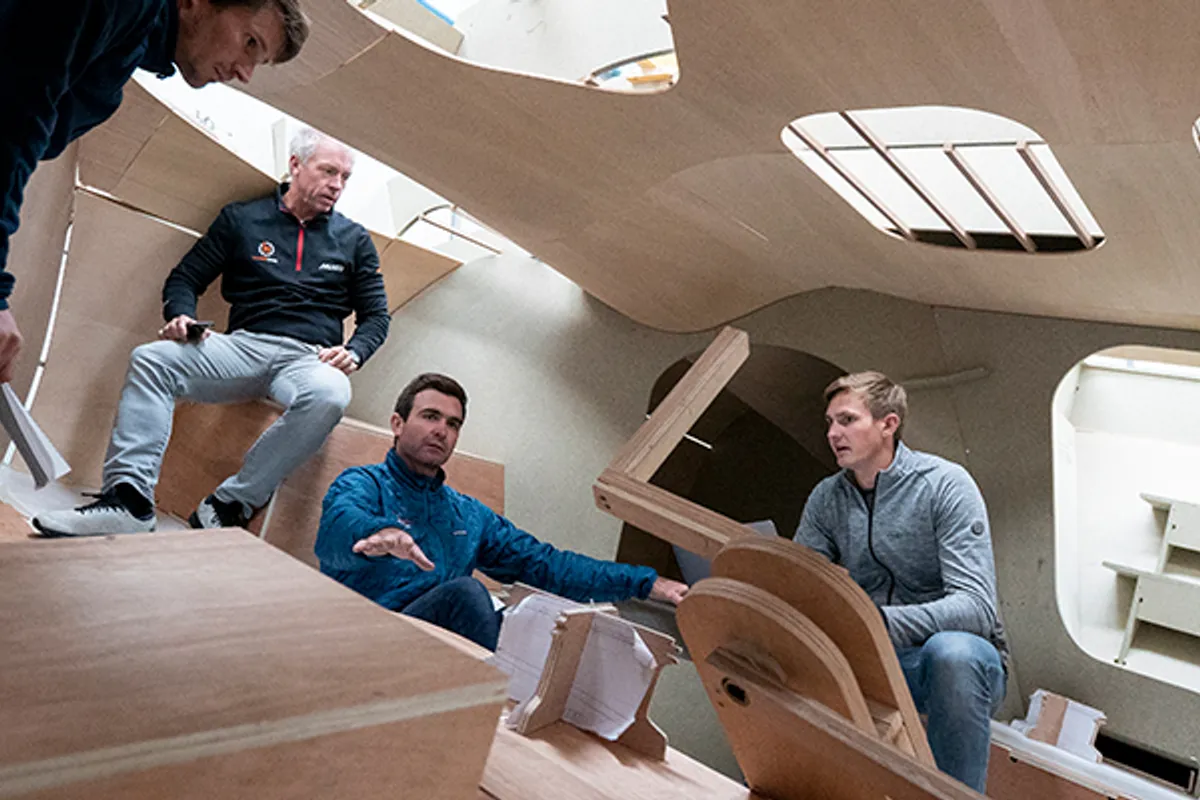11th Hour Racing Team have taken one step closer in their ambition to win The Ocean Race 2022-23 with the build of a brand new IMOCA 60 in Brittany, France - the heart of the French offshore racing scene Work started back in June 2019 with three of the most experienced and successful offshore racing organizations to design and build the boat. Build of the hull has been completed and the deck construction is underway.
11th Hour have brought together three of the most experienced and successful offshore racing expert organizations to conceptualize, design and build this new boat.
Designer, Guillaume Verdier is one of yacht racing’s most prolific naval architects in the sport with America’s Cup winners, Ultime record-breakers and was involved in the design of four of the last five Vendée Globe winners. Verdier brings together the very best minds in the offshore sailing world to work collaboratively across all areas from structural design to routing, and engineering to computational fluid dynamics.
The strategic partner for the technical and performance aspects of the new boat build is MerConcept, led by offshore racing veteran François Gabart who won the Vendée Globe in 2012. MerConcept, an Entreprise à Mission [purpose-led company] more recently led the build of Apivia – the latest generation foiling IMOCA, which is a front-runner for the upcoming single-handed round the world race. A group of nearly a dozen engineers, designers and analysts are working on the analytics and data for the performance analysis of the new design.
The boat is being built by CDK Technologies, based out of Lorient and Port-la-Forêt, France, who have constructed many of the leading offshore sailing boats in the sport, including the last three winners of the Vendée Globe and the largest racing trimaran ever built, the Maxi Banque Populaire V.
Skipper Charlie Enright shared what inspired this next step in the team journey, “When we learned that The Ocean Race was going to be open to a development class we jumped at the opportunity. We’ve done two laps of the planet now in the one-design Volvo Ocean 65s and are very excited to take this next step in the Race with a custom design and build process.”
Team CEO, Mark Towill agrees, “The challenge that we have in front of us now is taking an IMOCA 60 and turning it into a fully crewed Ocean Race boat and integrating sustainability at every step in the process. It’s something that no-one’s ever done before and that to me is the most exciting part of our campaign.”
The Ocean Race co-owner Johan Salen spoke in July 2018 about his vision for teams to embrace the design challenge. “By opening the next race to the IMOCA 60 and the VO65, we intend to attract the very best sailors, designers and teams in the world to take up the challenge of competing in the pinnacle fully-crewed around the world race. The introduction of the IMOCA 60 brings a design and engineering element to the race that keeps us at the cutting edge of technology and performance and will be appealing to the most competitive performers in our sport.”
The boat is being built to fit The Ocean Race’s unique racecourse with up to 10 stopovers (including two additional equator crossings with a leg to Asia), which includes more upwind and tight-reaching sailing angles. Additionally, it was designed to meet the strict rules incorporating a crew of five (four male, one female) and one Onboard Reporter (OBR), and a heading-only autopilot. The new 11th Hour Racing Team IMOCA 60 will be the first of its kind in the Class.
Sounds relatively easy? Well not really! Designing the new 11th Hour Racing Team boat has provided some real challenges. Charlie explained more, “IMOCA 60s are typically built for single-handed racing therefore teams are allowed a smart autopilot which uses additional boat data, including wind angle and heel of the boat, to help keep the solo sailors on track. These boats are built with a tiller-system and sailors hand-steer less than 5% of the time, and are reliant on the autopilot for the rest.
“Whereas in The Ocean Race we are restricted to a heading-only autopilot which is not as accurate so it’s more effective to hand-steer our boat 100% of the time. As a result we have had to design our boat with twin steering wheels. A lot of thought and time went into the cockpit and deck design to ensure that our helmsmen and women have line-of-sight to the front of the boat and can see the sails, the wind conditions and sea state.
“This is all part of the exciting design challenge that entry into The Ocean Race 2022-23 has brought us. It keeps the Race true to its DNA which is sailors helming their boats around the world,” he added.
